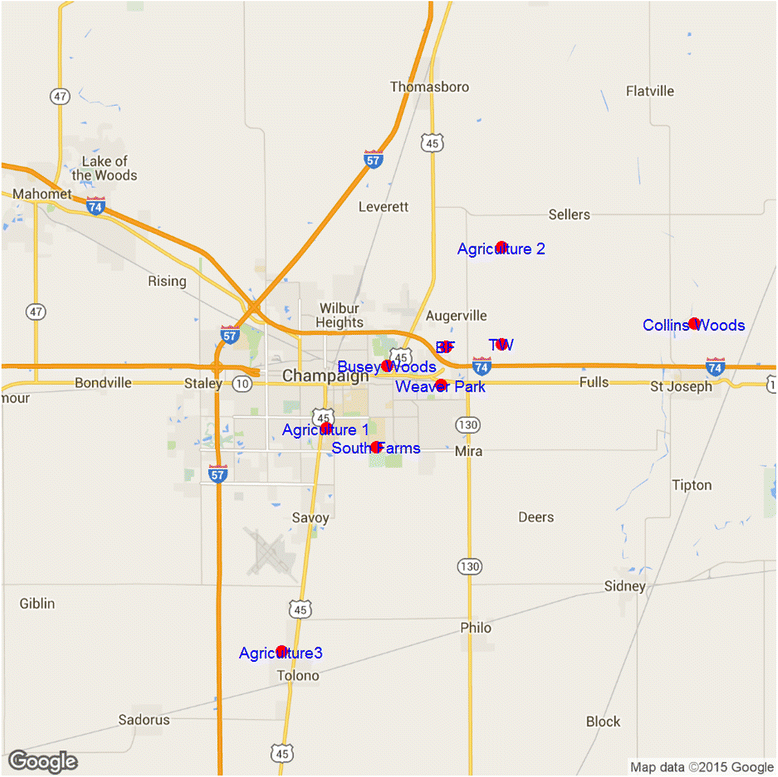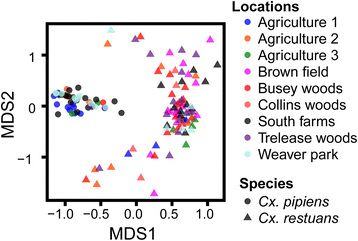Culex pipiens and Culex restuans mosquitoes harbor distinct microbiota dominated by few bacterial taxa
- PMID: 26762514
- PMCID: PMC4712599
- DOI: 10.1186/s13071-016-1299-6
Culex pipiens and Culex restuans mosquitoes harbor distinct microbiota dominated by few bacterial taxa
Abstract
Background: Mosquitoes host diverse microbial communities that influence many aspects of their biology including reproduction, digestion, and ability to transmit pathogens. Unraveling the composition, structure, and function of these microbiota can provide new opportunities for exploiting microbial function for mosquito-borne disease control.
Methods: MiSeq® sequencing of 16S rRNA gene amplicons was used to characterize the microbiota of adult females of Culex pipiens L. and Cx. restuans Theobald collected from nine study sites in central Illinois.
Results: Out of 195 bacterial OTUs that were identified, 86 were shared between the two mosquito species while 16 and 93 OTUs were unique to Cx. pipiens and Cx. restuans, respectively. The composition and structure of microbial communities differed significantly between the two mosquito species with Cx. restuans hosting a more diverse bacterial community compared to Cx. pipiens. Wolbachia (OTU836919) was the dominant bacterial species in Cx. pipiens accounting for 91% of total microbiota while Sphingomonas (OTU817982) was the dominant bacterial species in Cx. restuans accounting for 31% of total microbiota. Only 3 and 6 OTUs occurred in over 60% of individuals in Cx. pipiens and Cx. restuans, respectively. There was little effect of study site on bacterial community structure of either mosquito species.
Conclusion: These results suggest that the two mosquito species support distinct microbial communities that are sparsely distributed between individuals. These findings will allow investigations of the role of identified microbiota on the spatial and temporal heterogeneity in WNV transmission and their potential application in disease control.
Figures




References
-
- Zouache K, Raharimalala FN, Raquin V, Tran-Van V, Raveloson LH, Ravelonandro P, et al. Bacterial diversity of field-caught mosquitoes, Aedes albopictus and Aedes aegypti, from different geographic regions of Madagascar. FEMS Microbiol Ecol. 2011;75:377–389. doi: 10.1111/j.1574-6941.2010.01012.x. - DOI - PubMed
-
- Gusmao DS, Santos AV, Marini DC, Bacci M, Jr, Berbert-Molina MA, Lemos FJ. Culture-dependent and culture-independent characterization of microorganisms associated with Aedes aegypti (Diptera: Culicidae) (L.) and dynamics of bacterial colonization in the midgut. Acta Trop. 2010;115:275–281. doi: 10.1016/j.actatropica.2010.04.011. - DOI - PubMed
Publication types
MeSH terms
Substances
LinkOut - more resources
Full Text Sources
Other Literature Sources

